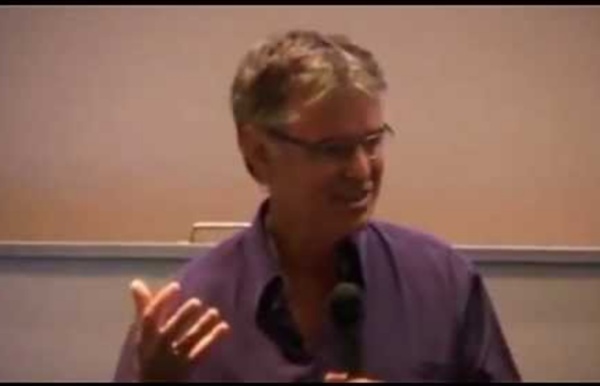John Hattie: Visible Learning Pt1. Disasters and below average methods.
http://www.youtube.com/watch?v=sng4p3Vsu7Y
Related: Instruction explicite
Explicit Teaching: A Lesson Structure That Delivers Results
How should you organise your lessons? What lesson structure should you adopt? Your answer to these questions will have a profound effect on how successful your lessons will be.
What works best
This page has now been revised (May 2010) in the light of John Hattie's recent apparently definitive work Visible Learning; a synthesis of over 800 meta-analyses relating to achievement (London; Routledge, 2009). The first thing to change has been the title, which used to be "What works and what doesn't". Hattie points out that in education most things work, more or less. The questions are around those which work best and therefore best repay the effort invested. This site is mainly about your own individual practice as a teacher, and as such it tries to take into account your particular circumstances, such as the students you teach (assumed largely to be over school-age), your subject, your setting (school, college, university, work-based or informal adult education). It recognises that it is difficult and even unreasonable to generalise, but we ought to set alongside this the results of very generalised research in the form of meta-analyses.
Teacher credibility: why it matters and how to build it
DEAD POETS SOCIETY, Robin Williams, 1989 When your students view you as a credible teacher, they are more likely to do well in school. According to John Hattie’s latest results (2016), teacher credibility has a massive impact (d = 0.9) on the subsequent learning that happens in the classroom. To put this in perspective, teacher credibility has more than twice the impact of student motivation.
Making learning Visible (John Hattie)
Auckland University Professor John Hattie has recently authored a study, based on research into 83 million students, studying effective teachers around the world and has come up with some reassuring results for creative teachers. It's all about trusting relationships and 'oodles of feedback'. Note - it is not about national testing, our government's highly unoriginal plan. Click here for latest blogA link For more undated thinking about Hattie It seems hard to avoid the brief press releases of Auckland University Professor John Hattie's research in our newspapers. It is a shame that the papers haven't done more in depth research of their own into Hattie's findings.
Lesson Goals: A Quick Way to Boost Student Achievement
Great lessons start with a clear focus and lesson goals provide that focus. Do you want to help more of students to succeed? Would you like to push each child to new levels of personal excellence? Then try setting lesson goals every day. Research1 shows that teachers who are clear about what they want their students to learn as a result of each lesson have a higher impact on their students’ results.
John Hattie's Eight Mind Frames For Teachers
“Hattie’s 8 Mind frames”. Video scribe project by Cheryl Reynolds. In Visible Learning for Teachers (p. 159 ff) John Hattie claims that “the major argument in this book underlying powerful impacts in our schools relates to how we think! It is a set of mind frames that underpin our every action and decision in a school; it is a belief that we are evaluators, change agents, adaptive learning experts, seekers of feedback about our impact, engaged in dialogue and challenge, and developers of trust with all, and that we see opportunity in error, and are keen to spread the message about the power, fun, and impact that we have on learning.” John Hattie believes “that teachers and school leaders who develop these ways of thinking are more likely to have major impacts on student learning.”
Top 10 Evidence Based Teaching Strategies
Most teachers care about their students’ results. If you are reading this article, you are undoubtedly one of them. There is no doubt that teachers make a difference to how well their kids do at school.
Teachers toolbox - Professor John Hattie's Table of Effect Sizes
Hattie says ‘effect sizes' are the best way of answering the question ‘what has the greatest influence on student learning?'. An effect-size of 1.0 is typically associated with: • advancing learners' achievement by one year, or improving the rate of learning by 50% • a correlation between some variable (e.g., amount of homework) and achievement of approximately .50
Related:


